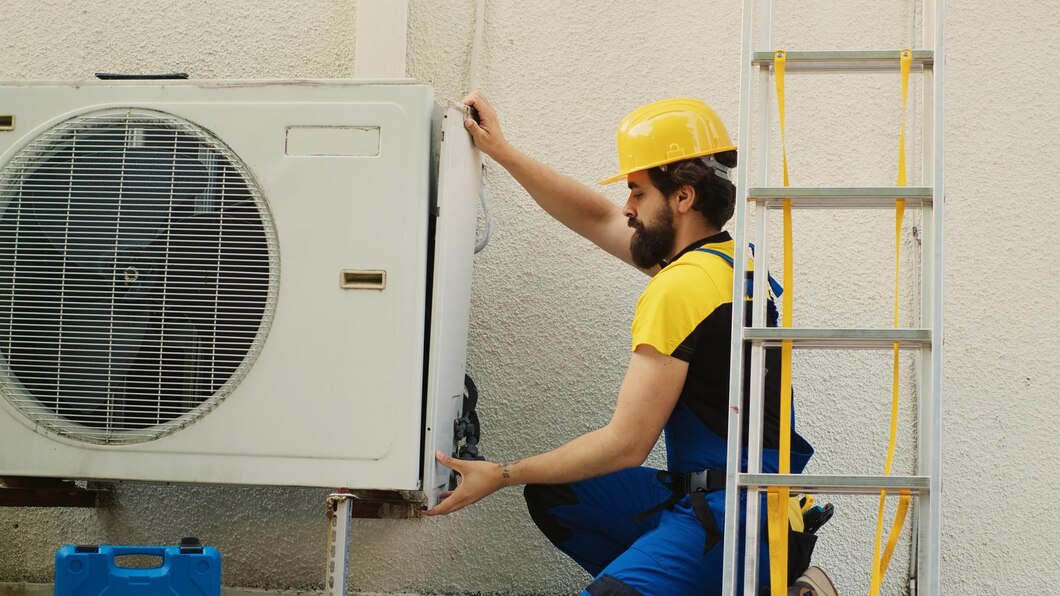The air handler fan motor is an essential part of your HVAC system. It helps circulate warm or cool air throughout your home, maintaining a comfortable indoor atmosphere. Any problems with the fan motor can disrupt this process, leading to uneven temperatures and increased energy use.
Signs of a Failing Air Handler Fan Motor
Recognizing the signs of a failing air handler fan motor can help you address the issue before it escalates. Being aware of these symptoms ensures that you can take timely action to maintain the efficiency of your HVAC system.
- Unusual Noises: Any odd sounds like squeaking, grinding, or rattling can indicate problems with the fan motor. These noises generally suggest that parts are wearing out or have shifted out of place.
- Weak Airflow: If air is not flowing as strongly as it should, it may point to a failing fan motor. Weaker airflow can result from the motor not running at full capacity or even partially seizing up.
- Frequent Cycling: If your HVAC system frequently turns on and off, this can be a sign of a problem with the fan motor. A faulty motor might prevent the system from maintaining the desired temperature, causing it to cycle more often.
- Overheating: A fan motor that overheats can emit a burning smell. This situation requires immediate attention, as overheating can lead to complete motor failure or even pose a fire risk.
- Increased Energy Bills: A malfunctioning fan motor makes the HVAC system work harder, thereby consuming more energy. This can lead to unexplained spikes in your energy bills.
Common Causes of Air Handler Fan Motor Problems
Understanding the common causes behind fan motor problems can help prevent them and ensure your air handler operates smoothly. Identifying and mitigating these issues can extend the life of your HVAC system.
- Wear and Tear: Over time, the fan motor experiences wear and tear from regular use. Bearings can wear out, and other components can degrade, leading to decreased motor efficiency and increased noise.
- Debris and Dust Build-up: Dust and debris can accumulate inside the air handler, obstructing the fan motor. This build-up can cause the motor to overheat and reduce its lifespan, leading to performance issues.
- Electrical Issues: Faulty wiring or electrical components can affect the fan motor’s operation. Issues like short circuits, power surges, or inadequate connections can cause the motor to fail.
- Lack of Lubrication: The fan motor’s moving parts require proper lubrication to function smoothly. Over time, lubrication can wear off, causing increased friction and strain on the motor.
- Improper Installation: If the fan motor is not installed correctly, it may face alignment issues that cause it to work inefficiently or make unusual noises.
- Blocked Vents: Blocked vents can restrict airflow, making the fan motor work harder to circulate air. This additional strain can lead to motor fatigue and eventual failure.
DIY Troubleshooting Steps
If you encounter problems with your air handler fan motor, some basic troubleshooting can help identify the issue. Follow these DIY steps to diagnose and potentially fix common problems.
- Check the Power Supply: Ensure that the air handler is receiving power. Check the main electrical panel for a tripped breaker or blown fuse and reset or replace as necessary.
- Inspect for Obstructions: Examine the fan and surrounding area for any debris or objects that might be obstructing the fan blades. Clear away any found obstructions to restore normal operation.
- Listen for Unusual Noises: Turn on the system and listen for any unusual sounds like grinding or rattling. These sounds can indicate loose parts or misalignment. If you identify a noise, inspect the motor and fan components closely.
- Test the Capacitor: Capacitors help start and run the motor. Use a multimeter to check the capacitor’s function. If it’s not working properly, replacing the capacitor might solve the problem.
- Lubricate Moving Parts: Check for areas that may need lubrication. Apply a suitable lubricant to the fan motor bearings and other moving parts to reduce friction and noise.
- Examine the Wiring: Look for frayed or damaged wires. Ensure all electrical connections are secure. If you find any damaged wires, consider consulting a professional for repair or replacement.
Preventive Maintenance for Air Handler Fan Motors
Regular preventive maintenance is key to keeping your air handler fan motor in good working condition. Simple steps can prevent costly repairs and ensure reliable performance.
- Regular Cleaning: Dust and debris can accumulate on the fan motor and blades. Clean these components regularly to prevent build-up. A clean motor operates more efficiently and experiences fewer problems.
- Inspect and Tighten Components: Check for loose screws, bolts, or other parts. Tighten any loose components to prevent rattling or misalignment. This ensures smoother operation and reduces wear and tear.
- Replace Filters: Dirty or clogged filters can restrict airflow, putting extra strain on the fan motor. Replace filters regularly according to the manufacturer’s recommendations to maintain optimal airflow.
- Lubricate Moving Parts: Keep the motor and its moving parts well-lubricated. Regular lubrication minimizes friction, reduces noise, and extends the life of the motor.
- Schedule Seasonal Checks: Perform detailed inspections before major seasons. Look for any signs of wear and tear, and address issues promptly to avoid serious problems.
- Monitor Performance: Pay attention to the system’s performance. Any changes like unusual noises or reduced airflow should prompt immediate inspection and maintenance.
Conclusion
Effective management of your air handler fan motor involves recognizing signs of failure, understanding common causes, and taking proactive steps for maintenance. From unusual noises to weak airflow, knowing the indicators of a failing fan motor helps you act quickly and avoid further complications. Regular cleaning, lubrication, and inspections are essential practices to keep your system running efficiently.
Explore our range of high-quality, energy-efficient Amana HVAC systems at I Heart Amana for reliable solutions. Invest in your home’s comfort and efficiency with products designed to perform!



Recent Comments